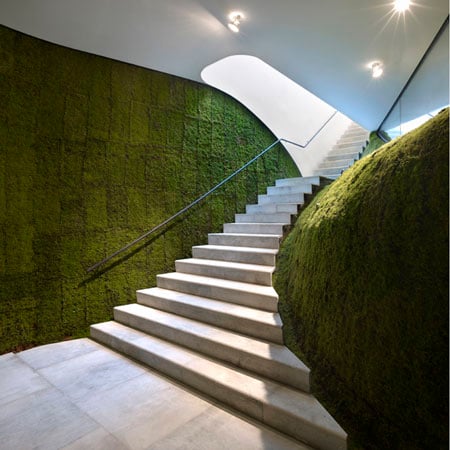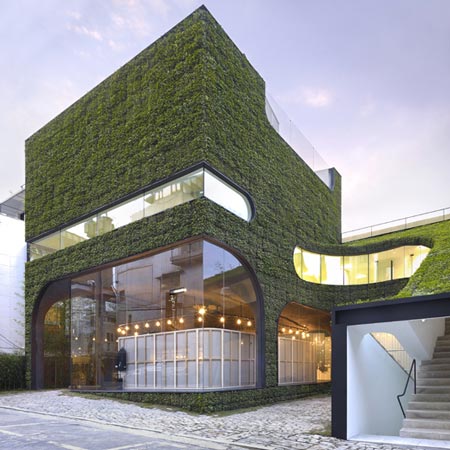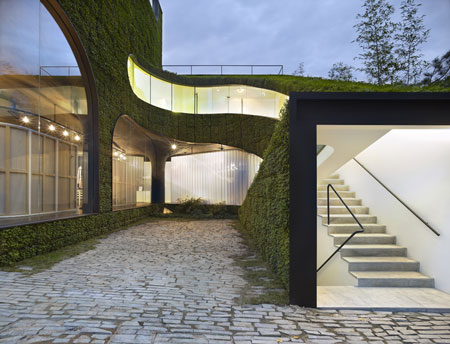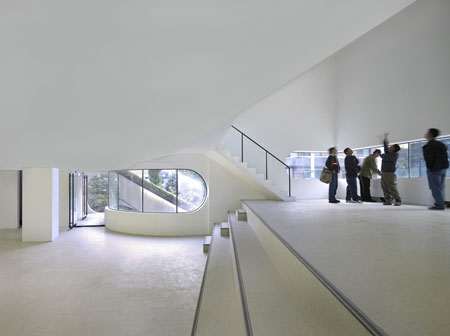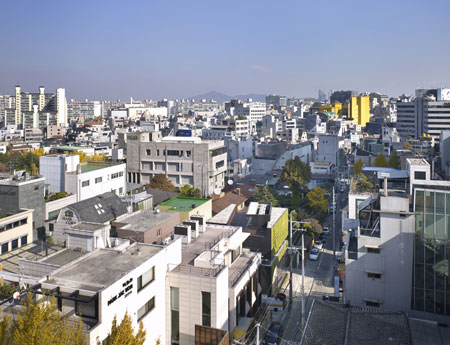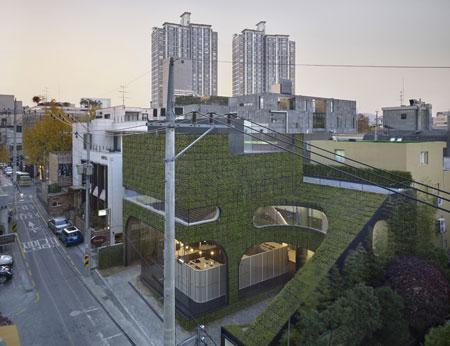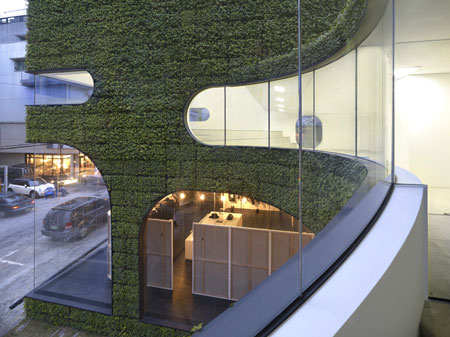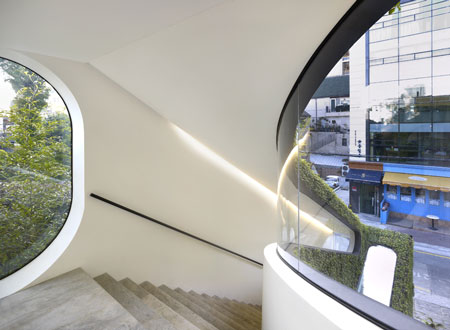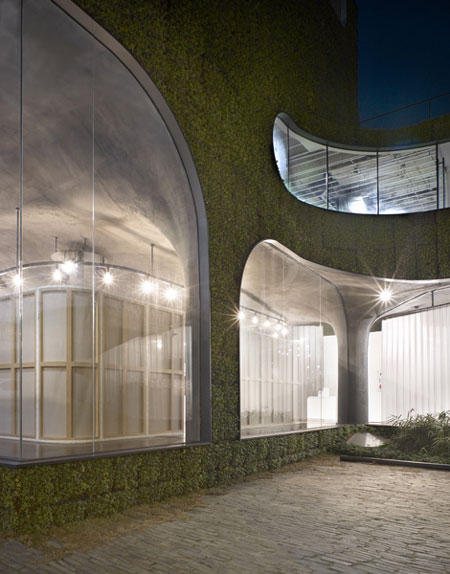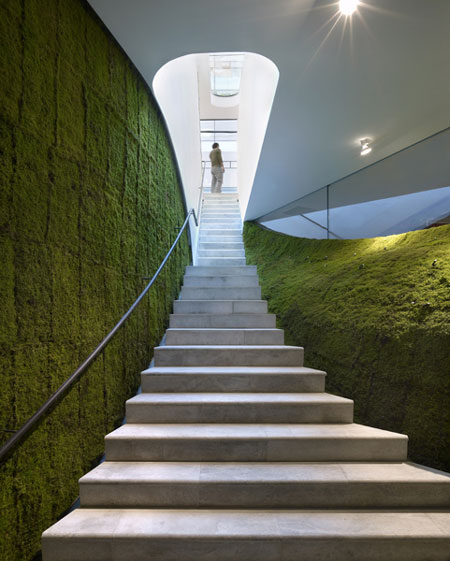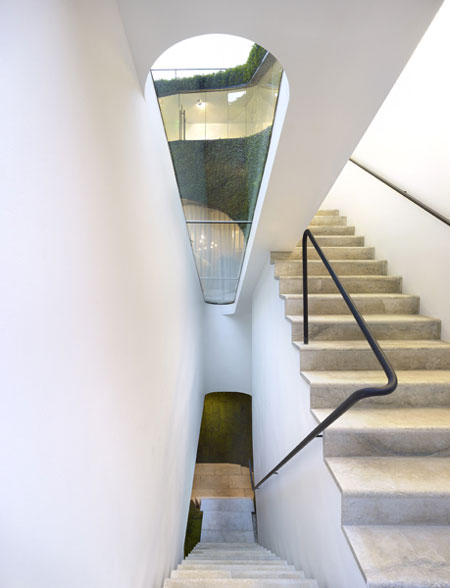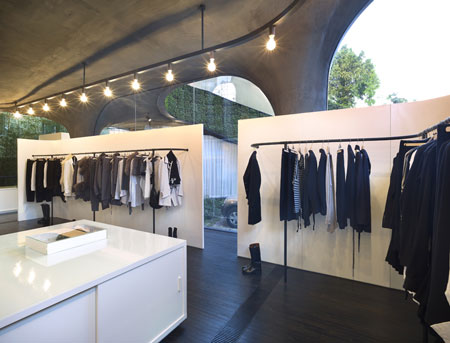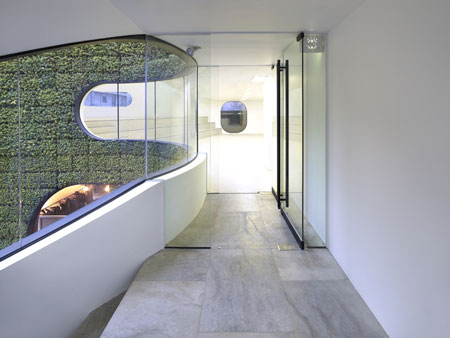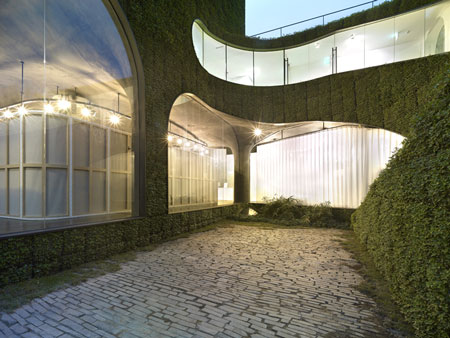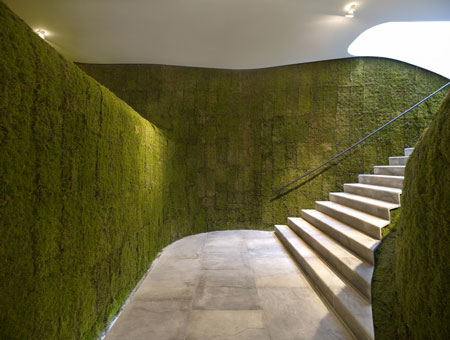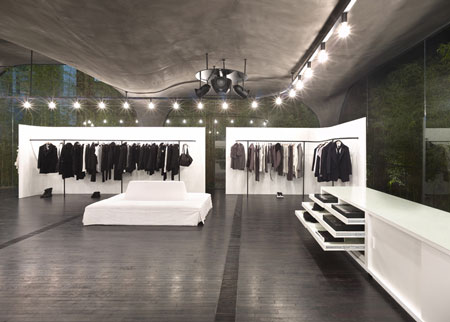اما اگه دیده باشه این رو و بتونه تو طول سال ها خوب نگهش داره -بدون رسیدگی خیلی زیاد البته!- کار بزرگی کرده...
Here is the first of three recent projects by Korean architect Minsuk Cho of
Mass Studies: the
Ann Demeulemeester Shop in the Gangham district of Seoul.
The building has a living facade of plants and features a moss-lined internal stairway.
The fashion store for Belgian designer Ann Demeulemeester occupies the ground floor of the building, which also contains a basement shop and a restaurant. All photos are copyright Yong-Kwan Kim and used with permission.
Below is some text about the shop from the architects, followed by project data, information about Mass Studios and a biography of Minsuk Cho:
–
Ann Demeulemeester Shop
The site is located in an alley, at a block’s distance from Dosandae-ro—a busy thoroughfare in Seoul’s Gangnam district—in close proximity to Dosan Park. Primarily residential in the past, the neighborhood is undergoing a rapid transformation into an upscale commercial district full of shops and restaurants.
The building is comprised of one subterranean level and three floors above. The Ann Demeulemeester Shop is located on the first floor, with a restaurant above and a Multi-Shop in the basement.
This proposal is an attempt to incorporate as much nature as possible into the building within the constraints of a low-elevation, high-density urban environment of limited space (378m2). The building defines its relationship between natural/artificial and interior/exterior as an amalgamation, rather than a confrontation.
Diverse interior spaces designated for its three main programs were made to be perceived and utilized as a part of the outdoors in a variety of ways. This building is not meant to be just another ‘object’ to be experienced externally, but rather as a synthetic organism of nature and artifice.
The parking lot/courtyard is at the center of the site, exposed to the street on the southern end. The entrance to the Ann Demeulemeester Shop is located on the western side of the courtyard, and stairs that lead to the other two programs are located on the eastern side. Landscaping of dense bamboo form a wall along each of the remaining three sides that border neighboring sites. Inside the first floor shop, undulating dark brown exposed concrete forms an organically shaped ceiling.
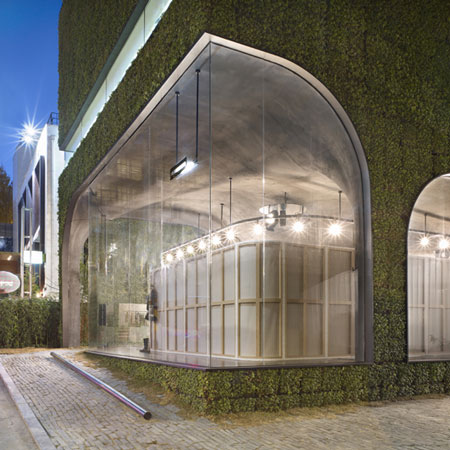
Round columns on the edges of the space continue the ceiling surface while providing the necessary structural support. This structural system creates arched openings of varying sizes that are open and as exposed as possible to the outside road and the bamboo hedges. This organic formation is not only a dynamic space but a flexible rectangular one (11.2m x 14m). The additional wing on the eastern side contains support functions such as fitting rooms, storage, and a bathroom, efficiently divided and connected at the same time.
The restaurant’s main entrance is a staircase that runs alongside the entire eastern side of the building. The shape of the ceiling below influences the restaurant space above, comprised of a three-level skip-floor formation. The two open-air spaces inside, a hidden terrace toward the rear of the building that extends from the top level, and a rooftop space accessible by stairs form a restaurant with intimacy, varying in spatial characteristics.
The stairs leading to the basement shop begins as a narrow, white, architectural space that gradually enlarges to become another organic shape—like a moss-covered subterranean cave—and serves as an entrance. This space is open to the outside, while at the same time is a composite garden buried 5.5m below ground.
The outside building material is primarily a geotextile planted with a herbaceous perennial to form a living façade, while the other three sides that face bamboo borders are clad in steel sheets are finished with propylene resin.
Project Data
architect: cho,minsuk + park,kisu
design team: mass studies
location: 650-14, Sinsa-dong, Gangnam-gu, Seoul, korea
site area: 377.60 m2
gross floor area: 220.66 m2
total floor area: 734.33 m2
building-to-land ratio: 58.44%
floor area ratio: 119.76%
building scope: 3f,b1
structure: rc
finishing: vertical garden(Pachysandra terminalis),
exposed color concrete
design period: 2007.1~2007.5
construction period: 2007.4~2007.10
Mass Studies
Mass Studies was founded in 2003 by Minsuk Cho in Seoul, Korea, as a critical investigation of architecture in the context of mass production, intensely over-populated urban conditions, and other emergent cultural niches that define contemporary society.
Amid the many frictions defining spatial conditions in the twenty-first century, namely past vs. future, local vs. global, utopia vs. reality, and individual vs. collective, Mass Studies focuses on the operative complexity of these multiple conditions instead of striving for a singular, unified perspective.
For each architectural project, which exist across a wide range of scales, Mass Studies explores issues such as spatial systems/matrixes, building materials/techniques, and typological divergences to foster a vision that allows the discovery of new socio/cultural potential.
Minsuk Cho, AIA, Principal, Mass Studies
Minsuk Cho was born in Seoul and graduated from the Architectural Engineering department of Yonsei University (Seoul, Korea) and the Graduate School of Architecture at Columbia University (New York).
He began his professional career working for Kolatan / MacDonald Studio, and Polshek and Partners in New York, and later moved to the Netherlands to work for OMA. Through these jobs, he gained experience in a wide range of architectural and urban projects implemented in various locations.
With business partner James Slade, he established Cho Slade Architecture in 1998 in New York City to be engaged in various projects both in the U.S. and Korea. In 2003, He came back to Korea to open his own firm, Mass Studies.
He has received many awards including the first prize in the 1994 Shinkenchiku International Residential Architecture Competition for new dwelling design and the Architectural League of New York’s ‘Young Architects Award’ in 2000 for his work at Cho Slade Architecture.
In addition, two U.S. Progressive Architecture Awards (Citations) were won by him for ‘Von Erlach House’ in 1999 and the ‘Heyri Dalki Theme Park’ in 2003. The Dalki Theme Park was exhibited at the theme exhibition of the 2004 La Biennale di Venezia. He recently participated in ‘open house’, traveling exhibition and ‘New Treads of Architecture in Europe, Asia-Pacific 2006-2007’.
His representative works include ‘Pixel House’ and ‘Dalki Theme Park’, ‘Nature Poem’, ‘Boutique Monaco’ and ‘Torque House’. He has also designed interior projects for the ‘Martine Sitbon shop,’ ‘MUE shop’ and ‘Bitforms Gallery Seoul.’
